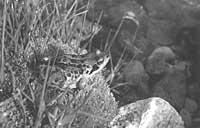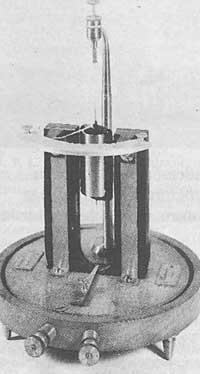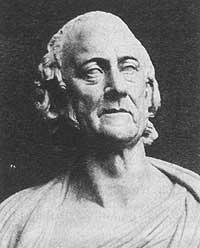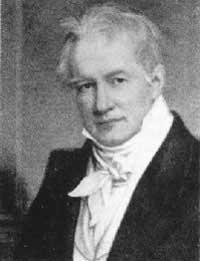Luigi Galvani
1991/10/01 Azkune Mendia, Iñaki - Elhuyar Fundazioa Iturria: Elhuyar aldizkaria

This Italian scientist was born in Bologna on 9 September 1737 and died there on 4 December 1798. He studied at the university of his hometown until his doctorate in 1762. That same year he joined the same university as professor of anatomy and at the same time taught obstetrics at the Institute of Arts and Sciences.
He was appointed president of the Bologna Academy of Sciences in 1772 and then investigated animal electricity. His discoveries were published in 1791 in the book De Viribus Electricitatis in Motu Musculari Commentarius.

In the time of Galvani were very fashionable the electric machines and electrical appliances they had in any university, like the bottles of Leyden. They also existed in Galvani's laboratory, which used them in anatomy or physiology trials.
Galvani observed that the frog legs (separated by cut from the body) were contracted and opened when they supported the electric shock or touched the mechanical scalpels connected to the electric machine. The frog's legs contracted without touching the scalpels, even with a simple approximation.
This fact was not so surprising in itself, knowing that the electric shock contracts the living muscles. Why not contract dead muscles?
Franklin had previously proven that the rays were electric shocks, so you could expect frog feet to contract during the storm. Galvani, therefore, placed the frog muscles in the window by pricking with metallic needles. The muscles contracted and extended during the storm, but also when there were no storms. It was enough to touch the muscle with two different metals. Where did electricity come from? Metal? Muscle?

Galvani, because he was an anatomist, said that he came from the muscles, that there was animal electricity.
Galvani kept his idea pure, but he was not right, as Volta showed years later. Galvani is very sorry for Volta's show.
However, in the last years of his life the name Galvani spread all over the world. The sustainable electricity generated by two contact metals was called galvanic electricity, in order to separate amber from the static electricity generated by rubbing with glass.
They are said to be galvanized when steel parts, applied by electric current or other system, have a layer of zinc crystal. On the other hand, in 1820 the French mathematician and physicist Andre Marie Ampère proposed that the system of detection of the presence or not of electric current be called galvanometer, and from there it is used in the field of electricity of the name of Luigi Galvani.

Gai honi buruzko eduki gehiago
Elhuyarrek garatutako teknologia





